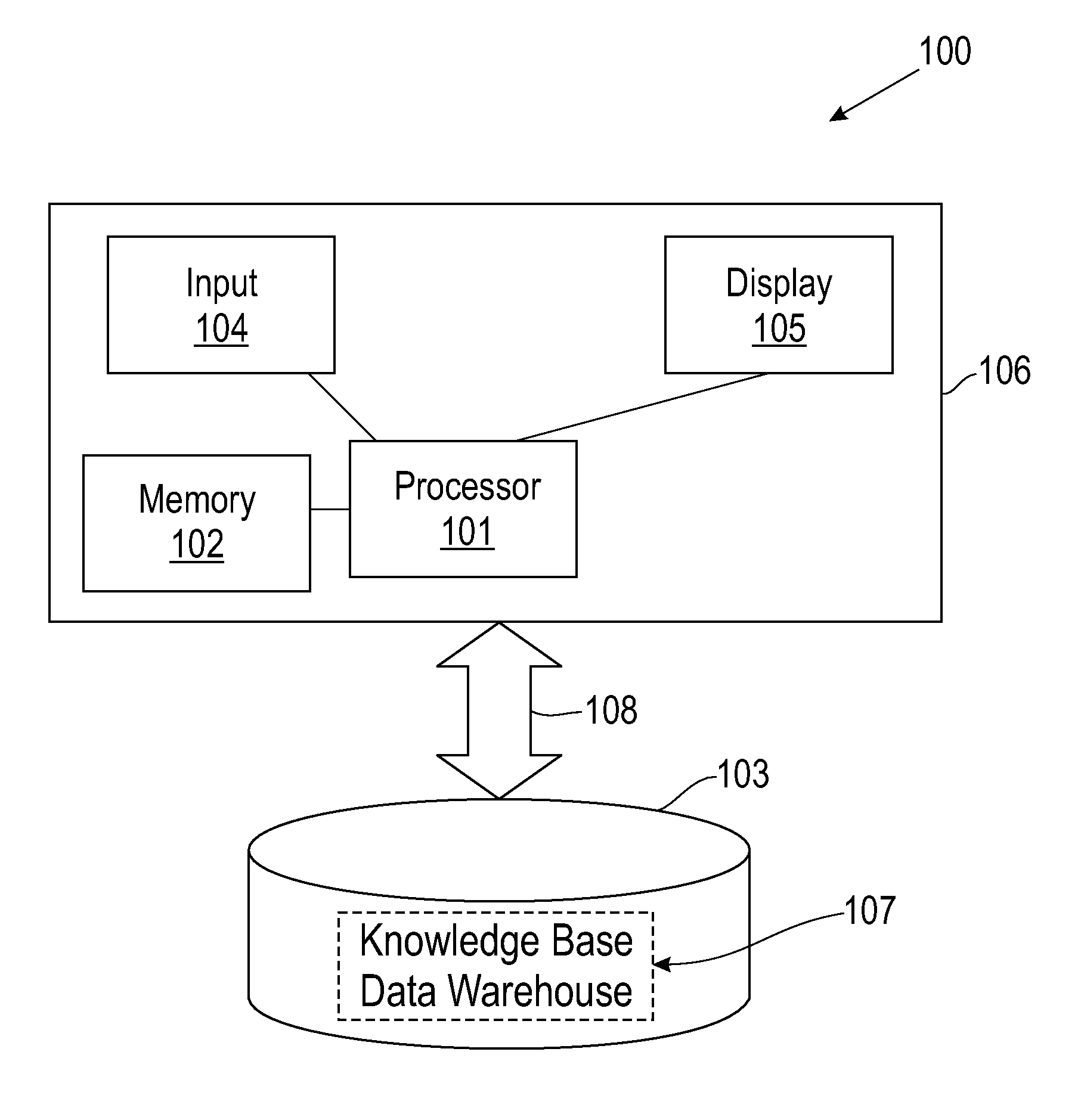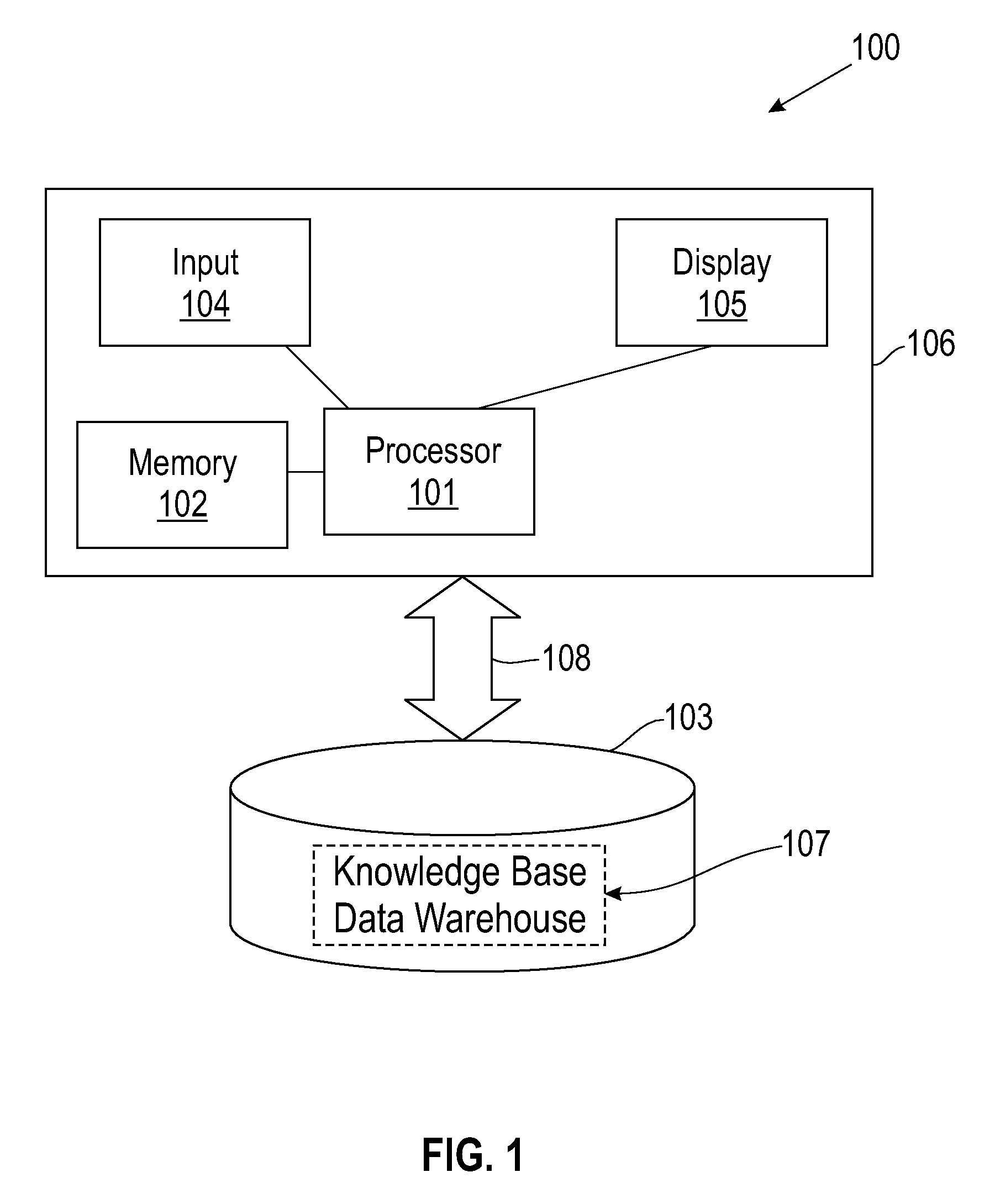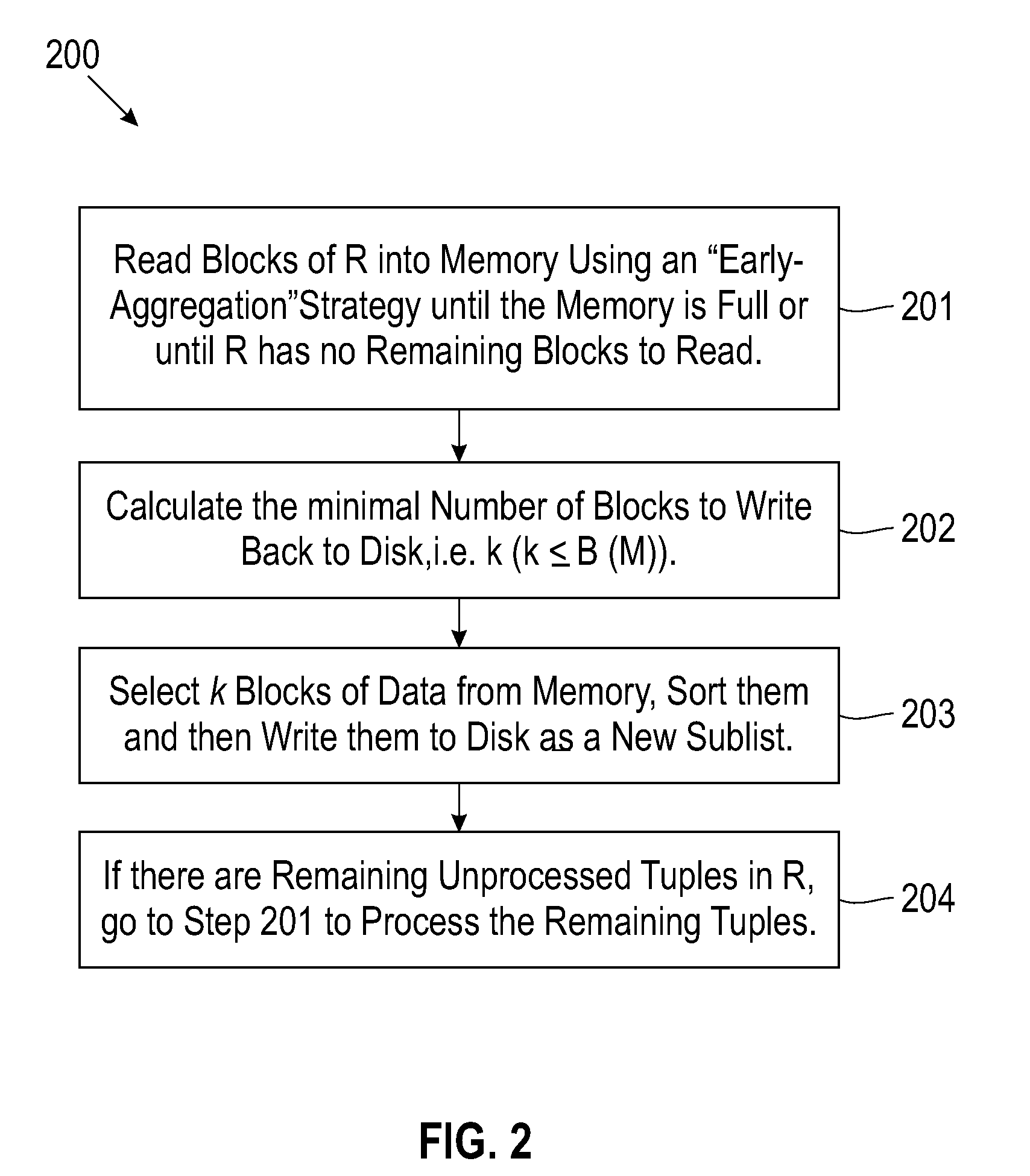Adaptive aggregation: improving the performance of grouping and duplicate elimination by avoiding unnecessary disk access
a technology of aggregation and avoiding unnecessary disk access, applied in the field of relational database management systems, can solve the problems of increasing the cost of aggregation operations, affecting the performance of existing methods, and incurring a significant number of unnecessary disk i/o operations
- Summary
- Abstract
- Description
- Claims
- Application Information
AI Technical Summary
Benefits of technology
Problems solved by technology
Method used
Image
Examples
example 1
[0030]In Example 1 (and Examples 2-4), Rt=14, and Dt=2, i.e., each disk block can hold 2 tuples, and the available memory is 4 disk blocks (i.e., B(R)=7 and B(M)=4). In Example 1 (and Examples 2-4), the 14 tuples containing 14 integers in the table R may be denoted (3,1; 15,2; 5,11; 2,5; 3,11; 9,4; 1,7) (see FIG. 3). Here each integer represents a tuple content and each block is separated from the next block by a semicolon. R[1-4] would contain (3,1; 15,2; 5,11; 2,5), and R[7] contains (1,7). Since B(M)<B(R), an external merge-sort based aggregation algorithm is required for duplicate elimination.
[0031]The external merge-sort based algorithm can compute aggregation through two passes. In the first pass, data may be divided into sublists based on the available memory size. Then each sublist may be read into memory, sorted, and written back to disk in the sorted fashion. In the second pass, the sorted sublists may be merged into the final result. FIG. 3 illustrates the process and res...
example 2
[0043]In the example illustrated in FIG. 6, in the first iteration, b1=6 and b2=1. According to Equation 1, k1=min(4; [½])=1, and thus only one block needs to be written to disk.
[0044]The total number of disk I / O operations using this adaptive strategy, including the first and second pass, may then be:
B(R)+2×(Σi=1N−1 min(B(M),[b(i+1) / (B(M)−i−1)])+kN) (2),
where N is the total number of iterations in the first pass. The last iteration may require special treatment. Since there are no more blocks from R to be read from disk, method 200 may sort all the tuples in memory and denote each of them as one of two types of tuples. The first type of tuples may refer to those tuples that were brought into memory during the first iteration of method 200 and were never written back to disk in the subsequent iterations. Such tuples survived all the aggregation operations in all generated sublists. Hence, they can be part of the final unique tuples to be output directly without further processing. ...
example 3
[0049]In the example shown in FIG. 6, in the first iteration, r1=6 and q1=0. According to Equation 5, f1=6 / 4=1.5.
[0050]As can be seen, f can be recomputed after each iteration, using Equation 5. As more data is processed, fi may become a more accurate estimate of f as well. It may also be observed that as aggregations are done progressively in each iteration, fi is always smaller than or equal to the real f value, which is the average duplicate factor. In other words, fi is never an overly optimistic value that might cause too few blocks to be written back at the beginning and too many blocks to be processed at the end, leading to overall performance degradation.
[0051]Returning to the second subproblem for method 200—i.e., which k blocks should be written?—method 200 may apply a random strategy, a recent-count ranking strategy, or a total-count ranking strategy for selecting the blocks, as further described, respectively, below.
[0052]Once appropriate ki for each iteration is determi...
PUM
 Login to View More
Login to View More Abstract
Description
Claims
Application Information
 Login to View More
Login to View More - R&D
- Intellectual Property
- Life Sciences
- Materials
- Tech Scout
- Unparalleled Data Quality
- Higher Quality Content
- 60% Fewer Hallucinations
Browse by: Latest US Patents, China's latest patents, Technical Efficacy Thesaurus, Application Domain, Technology Topic, Popular Technical Reports.
© 2025 PatSnap. All rights reserved.Legal|Privacy policy|Modern Slavery Act Transparency Statement|Sitemap|About US| Contact US: help@patsnap.com



